-
Memory Lane
We have returned from America, which means, of course, that we were allowed to go there. This was a strange trip, for a variety of reasons:
- through no fault of our own, we haven’t been there for a long time, so traveling itself felt odd
- by pure happenstance, this trip coincided with our original trip to Upstate New York—precisely twenty years ago—when we went there on our honeymoon in April 2002. (I can’t be certain, but I’m pretty sure we are the only couple in the history of the world who have voluntarily gone to Albany, NY for their honeymoon.)
- also by happenstance, I ended up reminiscing with family and friends about the past to a greater degree than usual for these trips.
- and also by happenstance (or would it be serendipity?), we stumbled upon an amazing hiking trail that allowed me to visit many of my youthful haunts, and see them from a unique perspective.
The traveling to and from—much as I would love to complain about it—wasn’t really bad. It was simply tiresome and, as usual, made me vow to never take United Airlines again, ever, but I know I will because they are the only way to get a direct, morning flight from Heathrow to Newark, so I have no choice.
The visit was nice. I got to see my G-Kids for the first time in over two years, and I managed to visit a few not-so-far-flung family members for some deep dives into nostalgia.
And the weather was unusually nice. It wasn’t like the Costa del Sol, but because early April in Upstate NY can bring snow, we were very pleased to find it agreeably mild.
Because we were most concerned about simply getting there, we never really planned anything to do, which found us hanging around during the day while everyone was at work and the kids were at school. Consequently, by our third day, we were so bored we took a drive, just for something to do, and we inadvertently ran into The Empire State Trail.
Amazingly, during the pandemic, the State of New York managed to construct a 750-mile hiking trail going from Buffalo to Albany, and New York City to the Canadian border. And it just happens to wind through the area I grew up in. This lucky find kept us pleasantly occupied for many hours over the two weeks we were there.
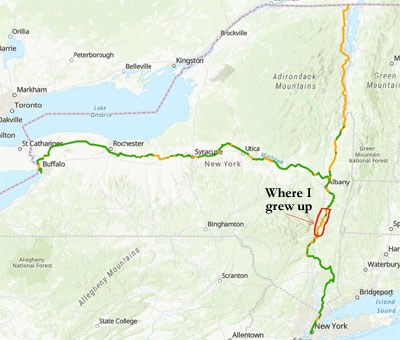
The Trail, all of it, and my bit. The trail is about 5 feet wide, paved in most places, gravelled in others, and sometimes uses quiet roadways. There are well-marked crossings where the path and main roads intersect (this is how we found it) and parking lots spaced along its length, so you generally have a convenient place to start your hike. It was pleasant to walk on and, unlike the trails in Sussex, when we stood still and listened, all we could hear were the birds instead of the constant background hum of traffic. We walked several sections of it, and it was quite a nostalgic treat for me to see the areas I grew up and played in as a boy, and the changes that had come about since then.

Part of The Trial, just outside Nassau, facing the Car Park. And the things that have stayed the same.
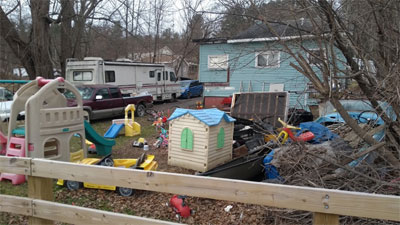
Ah, but ain’t that America…
Brings a tear to my eye.Parts of The Empire State Trail pass very close to places I spent a good deal of time at during my younger years, so I couldn’t resist taking a few side-trips. One of the best was to The Sand Bar, a swimming hole that people from all around used. In my day it was scrub-brush, a sandy crescent of a beach and a lot of craggy cliffs. These days, it’s a grassy park with picnic tables, barbecues, and a viewing platform. The only thing you can’t do at the old swimming hole is swim.

No Swimming?!?!?!? It’s a swimming hole, that’s what you do! However, it was a bit dangerous, so it’s no wonder the kids who grew up with me, and stayed in town, decided to stop their children and grandchildren from doing those things that they, themselves, enjoyed doing as a child.

We used to jump off of this, and I knew at least one guy who died doing it, so, yeah, probably best they closed it off. I also visited the woods I used to play in when I was in single digits, and had my photo taken with The White Lions.
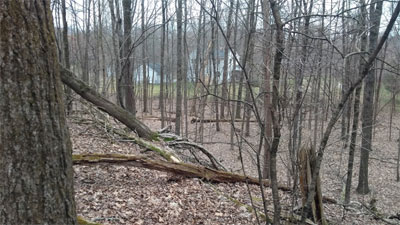
My playground as a child. There were no houses then, the woods looked a lot better, and there were drystone walls and old foundations visible. All gone now. The Lions are near Kinderhook Lake, and in August 1946 my mother and her sister had their photo taken in front of one of them when my mom was 12 and my aunt 13. As we were so close, I took a detour to the Lions and had my wife take a photo of me in front of the same lion, 75 years later.
When we were done and crossed to the road to resume the path, a woman said, “Hi” to us and we got into a conversation, and it turned out she knew my uncle and cousins and actually used to live in the house with the Lions. Her dad had owned it, and she told me how people used to stop and want to buy them. When he finally sold the house, he put it in the deed that the Lions had to stay with the property.
They are still there, and we can only hope they remain.

April 2022 and August 1946 (my mom is the one on the left).
I originally Photoshopped this image to have them superimposed on one another, but the ghostly image of my mom and aunt was too creepy.Another nostalgic treat came when my wife and I took my twin boys—now 41 years old—to the Four Brothers Restaurant for a pizza dinner. After we ate, I decided what we needed to cap off the meal was a Hot Fudge Sundae. (Believe it or not, you can’t get one in Sussex.) This led to my son scrolling through his phone to find a place where we might get one, seeing as how the Friendlies in East Greenbush had closed years ago.
Then I recalled that, in my younger days, the little town of Ghent used to have a Dairy Queen. This led to a 50-mile round trip, through the byways of my youth, with three nervous passengers who weren’t at all confident that I could find Ghent, much less a Dairy Queen, punctuated by me periodically pointing out clusters of buildings along the route we were taking and saying to my sons, “Do you know what was here when I was a boy? NOTHING!”
We did find Ghent. And the Dairy Queen. Back when I last visited—some forty-five years ago—it was a small shop with a window where you ordered take-away ice cream. Now it was a full-fledged restaurant which, fortunately, still served ice cream, and my pilgrimage was rewarded with the worst Hot Fudge Sundae I have ever had.

I drove 50 miles for that, and it’s nothing but some vanilla ice cream in a cup with a dollop of warm chocolate sauce and several handfuls of whole peanuts thrown in. But at least I found the Dairy Queen.
Another lengthy and nostalgia-laden trip—undertaken by me and my wife—was a road-trip up to Lake George. We did this simply because, twenty years ago, when we first visited, we had made the same trip. The weather was different, but the results were the same: nothing was open. Lake George—and much of the Adirondacks—are set up for seasonal activities, and early April doesn’t qualify as summer, or winter. So, we drove the quiet streets, admired the scenery, took a photo by the lake, and went home.

April 2022 – April 2002 The main point of the visit, however, was to visit with the G-Kids, who have changed a bit since the last time we saw them. Let’s hope we never have to leave it this long again.
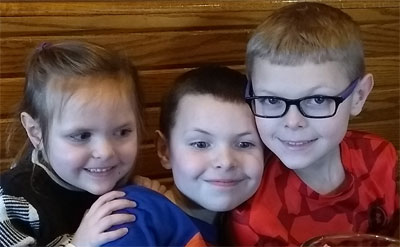
This was the last time I saw them, in 2020. 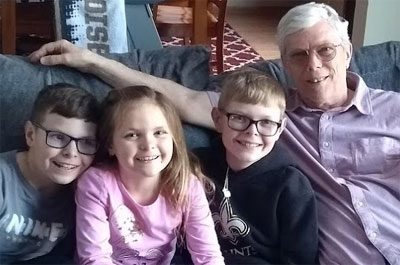
This is them now, with me.
I tried to cut myself out of the photo, but the disembodied arm looked a bit menacing.